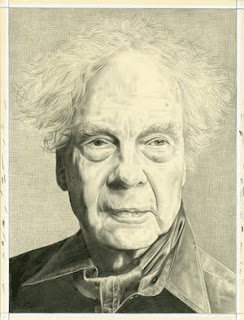
Douglass Dunn grew up in Palo Alto California. He tried a multitude of sports that incorporated quick shifts, deception, and dodges. He eventually went to school at Princeton University, which is where his mind opened up about art and eventually led him to a career as a dancer. At Princeton, the endless studying made him unsteady and he decided one day to randomly take a dance at the local Ballet Society. Soon he because a regular and was asked to perform, however, he married and moved to Connecticut to become a teacher. On a whim, he moved to New York City and became infatuated with Merce Cunninghams technique and class. Cunningham asked him into his company and the rest is history. I believe his whimsical move to New York City (almost like a midlife crisis) was a paramount shift in his personal life that led him to career he now has.
This link provides a look at his full biography:
http://douglasdunndance.com/index.php?option=com_content&task=view&id=20&Itemid=40
Jacob's Pillow
After his junior year in college, Dunn attended Jacob's pillow, which was an eye opening experience. Here he was influenced by Ted Shawn among others that had a great impact on concert dance. Dunn had never even seen these performers before. Here, at this pivotal dance landmark in history, Dunn was able to further his new interest and love for dance that furthered his career.
This link is an article that gives us an in depth look at how Dunn was introduced to the dance art form and the people who shaped his early career:
http://douglasdunndance.com/index.php?option=com_content&task=view&id=43&Itemid=56
Merce Cunningham and Minimalism
Perhaps the thing that had the most affect on Douglas Dunn was Merce Cunningham and his minimalistic approach. Merce Cunningham is one of the first people Dunn studied under and seems to be the person who had the biggest impact on Dunn and his dancing. Multiple reviews and articles explain how Dunn continues to use Cunningham's style of minimalism in many of his pieces.
This link is a review about
Inventors at La Mama Experiemental Theatre. Dunn coupled up with Christopher Williams, who has a very different style. It describes how Dunn uses his influences from Cunningham with minimalism, but how he is also exceptional at using humor in his pieces:
http://www.brooklynrail.org/2007/6/dance/min







 Douglass Dunn grew up in Palo Alto California. He tried a multitude of sports that incorporated quick shifts, deception, and dodges. He eventually went to school at Princeton University, which is where his mind opened up about art and eventually led him to a career as a dancer. At Princeton, the endless studying made him unsteady and he decided one day to randomly take a dance at the local Ballet Society. Soon he because a regular and was asked to perform, however, he married and moved to Connecticut to become a teacher. On a whim, he moved to New York City and became infatuated with Merce Cunninghams technique and class. Cunningham asked him into his company and the rest is history. I believe his whimsical move to New York City (almost like a midlife crisis) was a paramount shift in his personal life that led him to career he now has.
Douglass Dunn grew up in Palo Alto California. He tried a multitude of sports that incorporated quick shifts, deception, and dodges. He eventually went to school at Princeton University, which is where his mind opened up about art and eventually led him to a career as a dancer. At Princeton, the endless studying made him unsteady and he decided one day to randomly take a dance at the local Ballet Society. Soon he because a regular and was asked to perform, however, he married and moved to Connecticut to become a teacher. On a whim, he moved to New York City and became infatuated with Merce Cunninghams technique and class. Cunningham asked him into his company and the rest is history. I believe his whimsical move to New York City (almost like a midlife crisis) was a paramount shift in his personal life that led him to career he now has.


